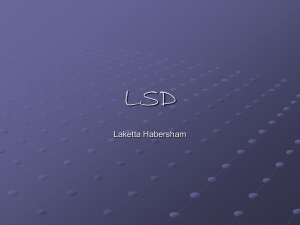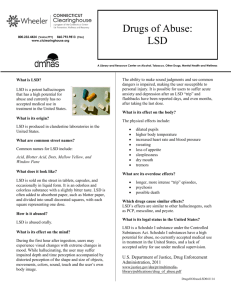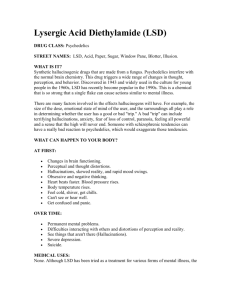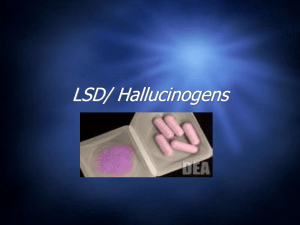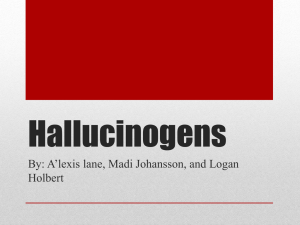Center Differential
advertisement
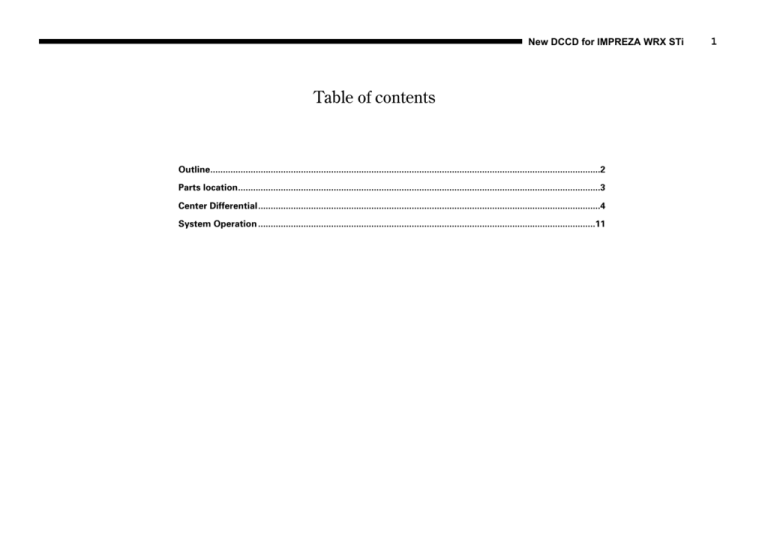
New DCCD for IMPREZA WRX STi Table of contents Outline...........................................................................................................................................................2 Parts location................................................................................................................................................3 Center Differential........................................................................................................................................4 System Operation ......................................................................................................................................11 1 New DCCD for IMPREZA WRX STi 2 Outline The Driver's Control Center Differential system is system that appropriately controls the differential limiting force of center differential LSD depending on running conditions of a vehicle. The new DCCD system evolved provides controls that follow operations of the driver, while conventional DCCD system provides those based on conditions of the vehicle. The system consists of a center differential of planetary gear type provided with LSD function, a steering angle sensor, a yaw rate sensor, a lateral G sensor, a DCCD control module and other components. Hybrid LSD mechanism using conventional electromagnetic clutch LSD mechanism added with torque-sensitive mechanical LSD mechanism allows approximate coincidence between the vehicle acceleration/deceleration and LSD clutch differential limiting timings, resulting in linear LSD characteristics acquired through driver's accelerator operation. Thus, the driver can more freely control the vehicle by easily grasping behavior of the vehicle. In addition, the steering angle sensor let the DCCD control module know the driver's intension of turning. In combination with the yaw rate and lateral G sensors, it adjusts the electromagnetic clutch LSD differential limiting force based on the running path imaged by the driver and the actual behavior of the vehicle. Thus, cornering in better accordance with the driver's image is enabled, preventing occurrence of understeer and oversteer. For balancing between the vehicle turning performance and traction during turning in a high order, the center differential driving torque is set to have distribution ratio 41:59. New DCCD for IMPREZA WRX STi Parts Location Auto mode indicator Steering angle sesor DCCD control module ECM Center differential ABS CM&H/U DCCD Control dial Manual mode switch Manual mode indicator Rear differential oil temperature warning light Manual mode switch Center differential control dial Accelerator position Rear differential oil DCCD Indicator sensor temperature switch Stop light switch Lateral G sensor Parking brake switch DCCD Relay Manual mode switch/DCCD control dial Rear differential oil temperature warning light In manual mode, the DCCD control can be used to adjust the differential limiting force of the electromagnetic clutch LSD mechanism in the range from free to lock. Current settings of the control dial are displayed on the indicator in the meter. When the DCCD system has detected abnormally high temperature of the rear differential oil, it notifies the driver of it through the warning light in the meter and, at the same time, frees the differential limiting force of the electromagnetic clutch LSD mechanism. 3 New DCCD for IMPREZA WRX STi Center Differential The center differential consists of three components: a planetary gear unit differential, a torque-sensitive mechanical LSD mechanism and an electromagnetic clutch LSD mechanism. Engine output power input from the transmission driven shaft to the center differential goes through the planetary gear unit and is transmitted to the front wheel side from the drive pinion shaft penetrating through the driven shaft and to the rear wheel side from the transfer drive gear. Planetary gear unit Mechanical LSD Electrical LSD Driven shaft Drive pinion shaft Transfer drive gear 4 New DCCD for IMPREZA WRX STi Center Differential Mechanism Carrier The planetary gear unit differential consists of a carrier containing six pinion gears, an internal gear mounted to inner periphery of the differential case and a sun gear mounted to the planetary shaft outer periphery. Engine driving force input from the carrier is transmitted to the sun and internal gears engaged with the pinion gears with torque distribution ratio 41:59*. (*Value in the state with no differential limiting carried out by the LSD mechanism) Pinion gears Carrier Pinion gears Internal gear Carrier Sun gear Planetary shaft Pinion gear Sun gear Carrier Driven shaft Internal gear Sun gear Drive pinion shaft Internal gear Planetary shaft Transfer drive gear 5 New DCCD for IMPREZA WRX STi Power flow Pinion gear Engine Torque Sun gear Carrier Rear wheels Transmission Driven shaft Carrier Front wheels Transmission Driven shaft Drive pinion shaft Planetary shaft Internal gear Pinion gears Pinion gears Sun gear Internal gear Planetary shaft Differential case Drive pinion shaft Transfer drive gear Front Wheels Rear wheels Transfer drive gear Planetary shaft 6 New DCCD for IMPREZA WRX STi Mechanical LSD Mechanism The torque-sensitive mechanical LSD mechanism consists of a torque cam, main clutch and main clutch hub mounted to the sun gear and planetary shaft. The differential limiting function is achieved by restraining free rotation of the planetary gear unit when the main clutch is engaged with the torque cam. Main clutch hub Pinion gear Torque cam Sun gear Main clutch Main clutch hub Planetary shaft Pinion gears Main clutch Carrier Carrier Torque cam Internal gear Carrier Sun gear Internal gear Planetary shaft 7 New DCCD for IMPREZA WRX STi Differential limiting function of torque-sensitive mechanical LSD mechanism When torque input is to the center differential by acceleration or deceleration, the torque cam transmits the torque from the sun gear to the planetary shaft, generating force that moves the planetary shaft leftward in the figure given below. This force moves the main clutch hub mounted to the planetary shaft leftward in the figure, causing the main clutch to be engaged. Pinion gear Because the main clutch outer periphery is connected to rear wheels through the differential case and its inner periphery to front wheels through the main clutch hub and planetary shaft, engagement of the main clutch causes to limit the differential action of the planetary gear unit. The main clutch engagement force is determined by the leftward force generated by the torque cam; therefore, the differential limiting force generated by the mechanical LSD automatically changes in proportion to the engine driving force (accelerator pedal travel). Main clutch Main clutch hub LSD force Torque cam Carrier Engine torque Sun gear Internal gear Planetary shaft 8 New DCCD for IMPREZA WRX STi 9 Electromagnet Clutch LSD Mechanism The electromagnetic clutch LSD mechanism consists of a main clutch, an intermediate clutch, a pilot clutch, an armature, a coil, six balls placed between the pilot clutch hub and intermediate pressure plate and other components. This LSD mechanism carries out differential limiting by converting braking force of the pilot clutch to main clutch engagement force by the balls and intermediate pressure plate. When inactive While the coil is deenergized, the pilot clutch is freed, allowing the pilot clutch hub, balls and intermediate pressure plate (connected to the sun gear through the main clutch hub) to turn idle with approximately the same rotational speed as the sun gear. In this state, the electromagnetic clutch LSD makes no differential limiting. Intermediate clutch pressure plate Pilot clutch hub DCCD CM Ball Armature Coil Main clutch hub Intermediate clutch Pilot clutch New DCCD for IMPREZA WRX STi When active When the coil is energized, its magnetic force attracts the armature to engage the pilot clutch. As the result, the pilot clutch hub is locked onto the differential case. (The pilot clutch engagement force varies by current flowing through the coil.) If rotational difference between the sun and internal gears is generated due to a slip in any of tires with the pilot clutch engaged, a phase difference that depends on the pilot clutch engagement force is generated between the intermediate pressure plate connected to the sun gear and the pilot clutch hub (connected to the internal gear through the differential case). Intermediate clutch pressure plate Pilot clutch hub As the result, the balls placed between the intermediate pressure plate and pilot clutch hub are given a force that presses the intermediate pressure plate leftward, causing the intermediate and main clutches to be engaged with each other. Connection between the intermediate and main clutch limits the differential action between the sun and internal gears. The force given to the balls that presses the intermediate pressure plate leftward is determined by the pilot clutch engagement force. Therefore, the differential limiting force of the electromagnetic clutch LSD can be controlled by adjusting the pilot clutch engagement force with current applied to the coil. DCCD CM Ball Armature Coil LSD force Main clutch hub Coil current Intermediate clutch Pilot clutch 10 New DCCD for IMPREZA WRX STi System operation System control is available in one of two modes: manual and auto. Operations in each mode are as follows: Manual mode: The system controls the magnetic clutch LSD to acquire the differential limiting force set on the control dial. Auto mode: Based on information from sensors detecting "driver's intension" and those detecting "vehicle conditions", the system executes electromagnetic clutch LSD control considering the driver's intension. The DCCD system input/output items are shown in the figure below. The system consists of sensors detecting "driver's intention" such as a steering angle sensor, those detecting "vehicle conditions" such as yaw rate and lateral G sensors and DCCD coil that controls engagement force of the electromagnetic clutch LSD. Driver's intention Vehicle driving condition Accelerator pedal sensor ABS Control Module (Wheel speed signal) Stop light switch Yaw rate sensor Steering angle sensor Lateral G sensor DCCD Control Module Parking brake switch Engine Control Module (Engine speed signal) DCCD Control dial Neutral position switch Manual mode switch Rear differential oil temp. sensor LOCK Rear differential oil temp. warning light Control output DCCD Indicator light DCCD coil assembly (Electromagnet coil) 11 New DCCD for IMPREZA WRX STi Manual Mode Operation Pressing the Manual Mode switch causes the DCCD system to be placed in manual mode. In this mode, the control dial can be used to arbitrarily adjust the magnetic clutch LSD limiting force ranging from free to lock. Control dial Indicator light LOCK 12 The DCCD control module gives certain current determined by setting on the control dial to the coil. It causes the magnetic clutch LSD differential limiting force to be fixed to a certain value. The chart given below shows differential limiting force characteristics of the whole center differential containing the mechanical LSD. When the control dial is set to its lowest position, the coil current is zero and the magnetic clutch LSD is free, with only the mechanical LSD functioning. When the control dial is set to the LOCK position, the coil current is the maximum, with the highest differential limiting force generated by the magnetic clutch LSD. Control output (Current control) Coil assembly Overall LSD force DCCD Control Module LOCK LSD force (Electromagnet LSD) LSD force (Mechanical LSD) Engine drive torque Mechanical LSD mechanism Electromagnetic LSD mechanism Notes: When the ignition switch is set OFF in manual mode, the DCCD system automatically returns to auto mode. Because the differential limiting force by the mechanical LSD is active even if it is set free in manual mode, the LSD function of the center differential is not completely freed. New DCCD for IMPREZA WRX STi Auto Mode Operation Controls in auto mode In auto mode, the differential limiting force of the electromagnetic clutch LSD is automatically adjusted according to the driver's intention and vehicle driving conditions. Of various controls including engine driving force sensitive control and ABS differential signal input control, this section discusses system operations including the vehicle running characteristics, using an example of cornering control. Vehicle conditon Driver's intention Accelerator pedal position signal Stop light switch Steering angle sensor Parking brake switch 13 Wheel speed signal DCCD Control Module G sensor signal Yaw rate sensor signal Engine rpm signal Control output (Current control) Coil assembly - Engine driving force sensitive control Optimum control of the electromagnetic clutch LSD engagement force, estimating the driving force from the throttle travel, engine rotational speed and prospective gear ratio, aiming to compensate the mechanical LSD characteristics. - ABS differential signal input control Control of electromagnetic clutch LSD engagement force so that the ABS system performance can be maximized. - Brake switch signal input control Control of electromagnetic clutch LSD engagement force so that the brake performance can be maximized. - Parking brake switch signal input control Releasing the electromagnetic clutch LSD when the parking brake is applied. - Tight cornering control Reducing the electromagnetic clutch LSD engagement force during turning at low speed to prevent occurrence of tight corner braking phenomena. - Slip control Controlling the electromagnetic clutch LSD engagement force depending on the slippage, if any, detected through four wheel speed signals. Mechanical LSD mechanism Electoromagnitic LSD mechanism - Cornering control Control that satisfies both controllability and stability of a turning vehicle. Maintaining the best cornering performance by controlling the pilot clutch engagement force based on the driver's intention and vehicle turning conditions determined from a steering angle, yaw rate and lateral G sensors and vehicle speed. New DCCD for IMPREZA WRX STi Advantages of mechanical LSD The mechanical LSD mechanism is advantageous in that it has good response of the LSD differential limiting force to the engine driving force and has direct vehicle operational stability allowing the driver to easily grasp changes in the vehicle behavior. This section discusses these advantages in comparison with conventional DCCD system. Conventional DCCD system Engine driving force generated Controlling coil current based on driving force estimated from detected information. Time lag existent between a change in engine driving force and generation of LSD differential limiting force. Accelerator travel signal Engine rotational speed signal DCCD CM Pilot clutch Generation of LSD differential limiting force Vehicle speed signal New DCCD system The torque cam moves to cause the main clutch to be engaged. The LSD differential limiting force exactly follows changes in the engine driving force. Engine driving force generated Accelerator pedal operation Torque cam Generation of LSD differential limiting force Variation of driving force in short period of time such as turbo lag can be followed without delay. 14 New DCCD for IMPREZA WRX STi 15 Engine driving force and mechanical LSD differential limiting force during turning The figure given below shows the engine driving force and mechanical LSD differential limiting force during turning of a vehicle. Consider the relationships between the engine driving force and mechanical LSD differential limiting force and the resulting running characteristics of the vehicle at points A through F. D C E F A Mechanical LSD differential limiting force A B C Engine driving force Accelerator travel Time D E F B New DCCD for IMPREZA WRX STi D: Depending on pressing of the accelerator pedal (generation of engine driving force), mechanical LSD differential limiting force is generated. It reduces oversteer tendency of the vehicle characteristics. F: At the corner exit, the engine driving force further increases and the mechanical LSD differential limiting force also increases in proportion to it. As the result, engine driving force is distributed appropriately to four wheels, improving the straight driving stability of the vehicle. D E F C E: As the driving force increases, the mechanical LSD differential limiting force also increases. Because appropriate LSD differential driving force is acquired depending on the engine driving force, the driver can easily grasp behavior of the vehicle. Engine driving force 16 Mechanical LSD differential limiting force C: When the accelerator pedal is released, the driving force is reduced. At the same time, the mechanical LSD differential limiting force is also reduced, giving priority to turning performance of the vehicle. B A A: At the entry of the corner, no engine driving force is generated. The mechanical LSD differential limiting force is weak, enabling to acquire quick steering characteristics. B: At the timing an engine driving force is generated, the mechanical LSD differential limiting force is also generated, raising stability of the vehicle. As described above, new DCCD system employing the mechanical LSD mechanism allows the timings of generating LSD differential limiting force to precisely follow the acceleration/deceleration timings of the vehicle. In addition, the differential limiting force is proportional to the engine driving force. Thus, the driver can easily grasp behavior of the vehicle and control the vehicle more freely. New DCCD for IMPREZA WRX STi Controls giving priority to driver's intention DCCD CM can know the driver's intention* to turn from steering angle sensor signal. By reflecting this information to the electromagnetic clutch LSD control, excessive understeer or oversteer during turning can be avoided, allowing cornering as imaged by the driver. (*The driver's intention can be determined through comparison among steering angle, lateral G and yaw rate sensor signals.) Conventional DCCD system Controlling coil current based on driving force estimated from detected signals. Vehicle speed signal Lateral G sensor signal DCCD CM Pilot clutch The system does not know the driver's intention, making passive control. Generation of LSD differential limiting force Yaw rate sensor signal New DCCD system Steering angle sensor Vehicle speed signal Lateral G sensor signal Yaw rate sensor signal The driver's intention is known from detected signals. DCCD CM Vehicle conditions are estimated from detected signals. Pilot clutch The driver's intention and vehicle conditions are compared with each other to control the coil current. Generation of LSD differential limiting force The system controls the LSD differential limiting force by continuously monitoring whether the driver has an intention to further turn or the vehicle is excessively turned. 17 New DCCD for IMPREZA WRX STi 18 Comprehensive LSD differential limiting force and vehicle operational stability during turning Consider relationships between the steering operation by the driver and the LSD differential limiting force and the resulting running characteristics of the vehicle. A: Turning the steering wheel at an entry of a corner Because the yaw rate is lower compared to the steering angle, DCCD CM reduces the electromagnetic clutch LSD differential limiting force, assuming that the driver has an intention to turn. It enables easier differential limiting by the center differential, allowing the driver to easily turn the vehicle. Driver's intention Accelerator pedal position signal Steering angle sensor Stop light switch Parking brake switch Vehicle condition DCCD Control Module Wheel speed signal G sensor signal Yaw rate sensor signal Engine rpm signal Engine drive torque Difference between driver's intention and behavior of vehicle Mechanical LSD differential limiting Electromagnetic LSD differential limiting Front wheels Rear wheels A Mechanical LSD Electromagnetic LSD New DCCD for IMPREZA WRX STi 19 B: Steady turning condition Because the yaw rate matches the steering angle, DCCD CM maintains the electromagnetic clutch LSD differential limiting force at an appropriate level, assuming that the vehicle is turning as intended by the driver. Driver's intention Accelerator pedal position signal Steering angle sensor Stop light switch Parking brake switch Vehicle condition DCCD Control Module Wheel speed signal G sensor signal Yaw rate sensor signal Engine rpm signal Engine drive torque Mechanical LSD differential limiting Difference between driver's intention and behavior of vehicle Electromagnetic LSD differential limiting Front wheels Rear wheels B Mechanical LSD Electromagnetic LSD New DCCD for IMPREZA WRX STi 20 C: Further turning the steering wheel during turning Because the yaw rate is lower compared to the steering angle, DCCD CM reduces the electromagnetic clutch LSD differential limiting force, assuming that the driver has an intention to further turn. It enables easier differential limiting by the center differential, allowing the driver to easily turn the vehicle. Driver's intention C C Accelerator pedal position signal Steering angle sensor Stop light switch Parking brake switch Vehicle condition DCCD Control Module Wheel speed signal G sensor signal Yaw rate sensor signal Engine rpm signal Engine drive torque Difference between driver's intention and behavior of vehicle Mechanical LSD differential limiting Electromagnetic LSD differential limiting Front wheels Mechanical LSD Rear wheels Electromagnetic LSD New DCCD for IMPREZA WRX STi 21 D: Returning the steering wheel during turning Because the yaw rate is higher compared to the steering angle, DCCD CM increases the electromagnetic clutch LSD differential limiting force, assuming that the driver has an intention to go straight. It makes tires less slippery, raises the traction and reserves the straight running stability. Driver's intention D Accelerator pedal position signal Steering angle sensor D Stop light switch Parking brake switch Vehicle condition DCCD Control Module Wheel speed signal G sensor signal Yaw rate sensor signal Engine rpm signal Engine drive torque Mechanical LSD differential limiting Difference between driver's intention and behavior of vehicle Electromagnetic LSD differential limiting Front wheels Mechanical LSD Rear wheels Electromagnetic LSD
